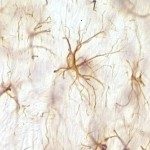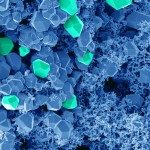Présentation
Homodimeric VHHs offer new perspectives for in vivo immunodiagnosis. Because of their small size of about 12-14 kDa, VHHs rapidly pass the renal filter, which has a cutoff of about 60 kDa, resulting in rapid blood clearance. In addition, the small size results in a fast tissue penetration. The VHH short serum half-life of about 30 min, compared to 4h for scFv and 50h for IgG, is advantageous for in vivo diagnosis using imaging and for the targeting of VHHs coupled to a substance of interest for treating a disorder, as one can expect that unspecifically bound VHH will be quickly removed from the tissues. Moreover, VHH are able to cross the Blood brain barrier, to penetrate into cells and to bind an intracellular target.
The aim of the project is to use nanobodies in order to label and reveal early lesions of Alzheimer’s disease (AD) by magnetic resonance imaging (MRI). The extracellular accumulation of Aβ peptides in the core of the senile plaques and the intracellular accumulation of phosphorylated tau proteins (p-Tau) into neurofibrillary tangles (NFTs) are today considered as the two molecular and morphological signatures of AD, mandatory for its diagnosis. In vivo neuroimaging of these lesions is urgently needed to improve the diagnosis, and to evaluate disease progression under treatment. We have shown that 2 nanobodies R3VQ and Tau A2 labeled with a fluorochrome directed respectively against Aβ and p-Tau are able to cross the BBB and to bind to their targets. We have then labeled these nanobodies with Gd, a MRI contrast agent and demonstrated that in vitro they revealed amyloid plaques.
We have a long term collaboration between Benoît Delatour Institut du Cerveau et de la Moelle (ICM) specialist of Alzheimer disease, Sylvie Bay Chemist (unité de Chimie des Biomolécules- Institut Pasteur) specialist of synthesis of chemical compounds and their labelling to proteins and Pierre Lafaye, Institut Pasteur specialist of nanobodies








